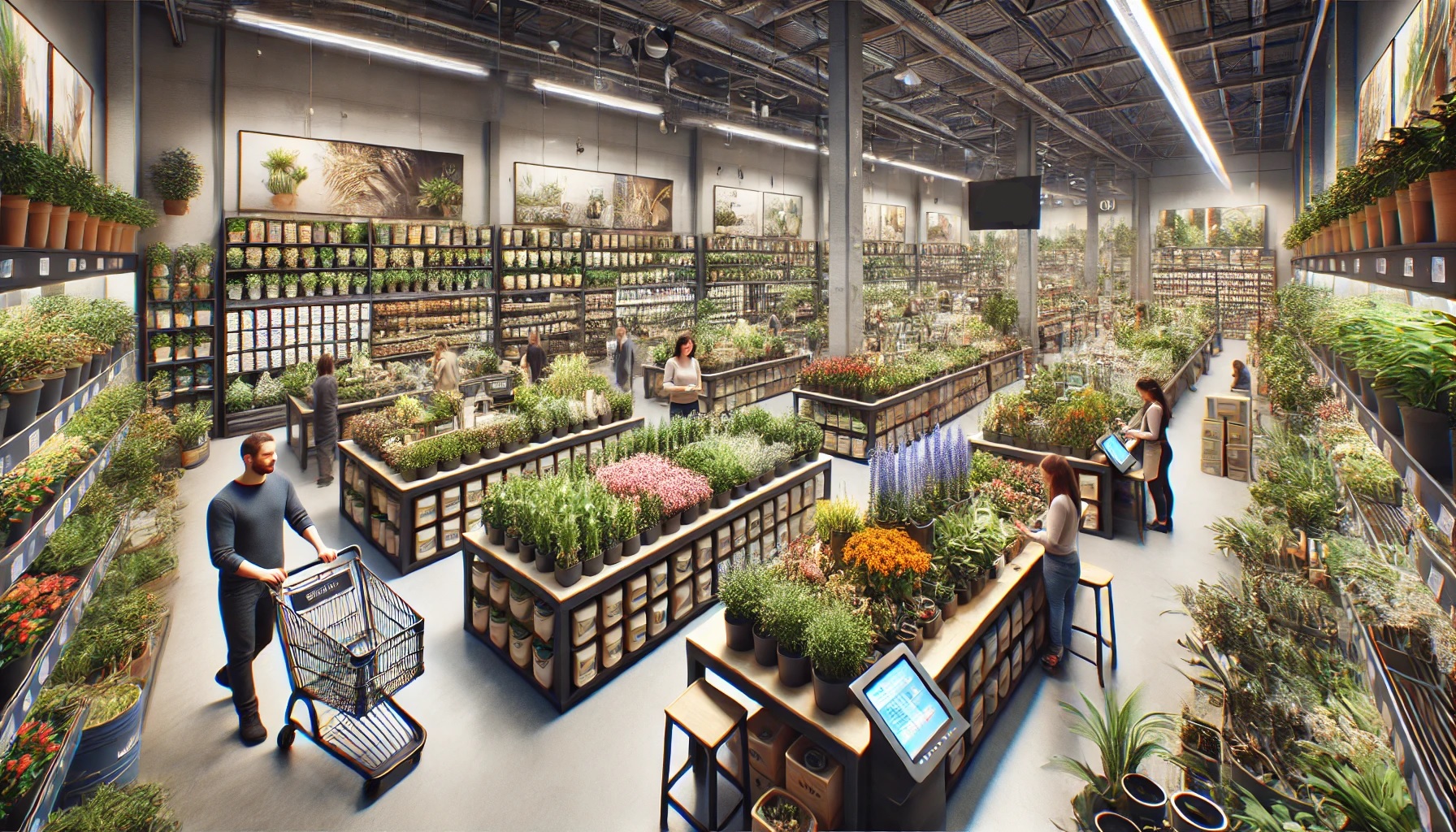The plants and gardening sector is a growing market that requires specialized care to maintain inventory quality and minimize losses. Plants, flowers, and gardening products are susceptible to waste, damage, and theft, making effective loss prevention strategies essential for profitability and sustainability.
In this article, we will explore the main causes of losses in the plants and gardening industry and best practices to prevent them, ensuring healthier plants and increased revenue.
Common Causes of Losses in the Plants and Gardening Sector
1. Product Deterioration
Plants and flowers are highly perishable, requiring proper care to remain healthy and attractive to customers. Issues such as lack of watering, inadequate light, incorrect temperature, and poor handling can lead to product loss.
2. Overstock and Poor Inventory Management
Overordering seasonal plants or failing to track inventory properly can result in waste and financial losses when unsold products become unfit for sale.
3. Theft and Shrinkage
Due to their open display format, plants, gardening tools, and accessories are vulnerable to theft. Small, high-value items, such as seeds and fertilizers, are particularly at risk.
4. Operational Errors
Mistakes in pricing, handling, and storage can cause unnecessary losses. Improper labeling or misplacement of plants can lead to confusion, reducing sales potential.
Best Strategies to Prevent Losses
1. Proper Plant Care and Maintenance
- Establish a daily care routine, including watering schedules, pruning, and soil monitoring.
- Train employees on best plant maintenance practices to avoid unnecessary deterioration.
- Use automated irrigation systems to ensure consistent moisture levels.
2. Efficient Inventory and Stock Management
- Implement real-time inventory tracking software to monitor plant sales and reduce overstock.
- Apply the FIFO (First In, First Out) method to ensure older plants are sold first.
- Analyze sales trends to order the right amount of seasonal plants and avoid excessive inventory.
3. Theft Prevention Measures
- Install security cameras and anti-theft devices to monitor high-risk areas.
- Position valuable and small gardening tools in locked or supervised sections.
- Train employees to recognize suspicious behavior and handle theft situations appropriately.
4. Proper Pricing and Promotion Strategies
- Offer discounts on plants nearing their peak condition to prevent waste.
- Use bundle promotions, combining plants with related gardening products to increase sales.
- Adjust pricing dynamically based on demand and product lifespan.
5. Employee Training and Customer Education
- Educate employees on how to handle plants properly and provide accurate information to customers.
- Train staff in loss prevention techniques, such as product placement and theft deterrence.
- Offer customer care guides on plant maintenance to improve satisfaction and reduce returns.
The Role of Technology in Loss Prevention
Investing in modern technology can enhance security and efficiency in garden centers and plant retailers. Key innovations include:
- Smart sensors for monitoring humidity, temperature, and soil quality.
- Automated inventory systems to track plant sales and prevent overstocking.
- AI-powered surveillance systems to detect unusual activity and reduce theft risks.
Benefits of Effective Loss Prevention
Implementing structured loss prevention measures results in several advantages, including:
- Higher profitability due to reduced waste and shrinkage.
- Healthier inventory, leading to increased customer satisfaction.
- Improved operational efficiency, optimizing stock control and maintenance processes.
- Greater sustainability, reducing unnecessary plant disposal and waste.
Conclusion
Loss prevention in the plants and gardening sector is crucial for maintaining product quality, minimizing financial losses, and ensuring a thriving business. By adopting proper plant care, inventory management, theft prevention, and employee training, retailers can significantly increase profitability and sustainability.
With the right strategies, a gardening business can optimize resources, reduce losses, and enhance the customer experience—creating a more efficient and profitable operation in the long run.
